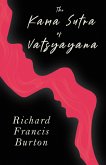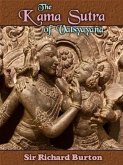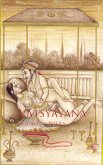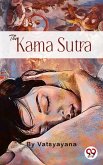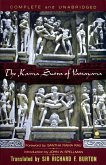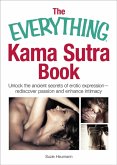The Kama Sutra of Vatsyayana Vatsyayana - The Kama Sutra of Vatsyayana by Richard Francis Burton is an edition of the ancient Indian text on sexuality and emotional needs. Vatsayana was an ancient Indian philosopher who lived during the second or third century. Although it is often thought of as a sex manual, it is much more, with guides on living well, the nature of love, and finding a partner. Indeed, Vatsyayana says himself: 'This work is not to be used merely as an instrument for satisfying our desires'. Burton did not in fact translate the Kama Sutra - it was translated by the Indian scholar Bhagwan Lal Indraji. It was edited by Burton to suit prevailing British attitudes to sex, but was still banned in England and the United States until 1962. Other criticisms levelled at Burton's translation is that instead of using English words for the sex organs, he uses the words 'lingam' and 'yoni', despite those words not appearing in the original work. This was seen as an attempt to distance them and make them 'other', rather than about English people's sexual organs. He also removes the agency of women, and where in the original, women's words are direct quotes, in the Burton translation, women's words are removed and put into the passive state (i.e., A woman saying 'Stop!' becomes 'She continually utters words expressive of prohibition'). Despite all this, it has been such an influential translation that even modern editions in the Hindi language are re-translations of the Burton version.The Kama Sutra is an ancient Indian Hindu text widely considered to be the standard work on human sexual behavior in Sanskrit literature written by Vaatsyayana. A portion of the work consists of practical advice on sexual intercourse. It is largely in prose, with many inserted anustubh poetry verses. "Kama" which is one of the four goals of Hindu life, means desire including sexual desire the latter being the subject of the textbook, and "sutra" literally means a thread or line that holds things together, and more metaphorically refers to an aphorism (or line, rule, formula), or a collection of such aphorisms in the form of a manual. Contrary to popular perception, especially in the western world, Kama sutra is not exclusively a sex manual; it presents itself as a guide to a virtuous and gracious living that discusses the nature of love, family life and other aspects pertaining to pleasure oriented faculties of human life.
Dieser Download kann aus rechtlichen Gründen nur mit Rechnungsadresse in A, B, BG, CY, CZ, D, DK, EW, E, FIN, F, GR, H, IRL, I, LT, L, LR, M, NL, PL, P, R, S, SLO, SK ausgeliefert werden.



